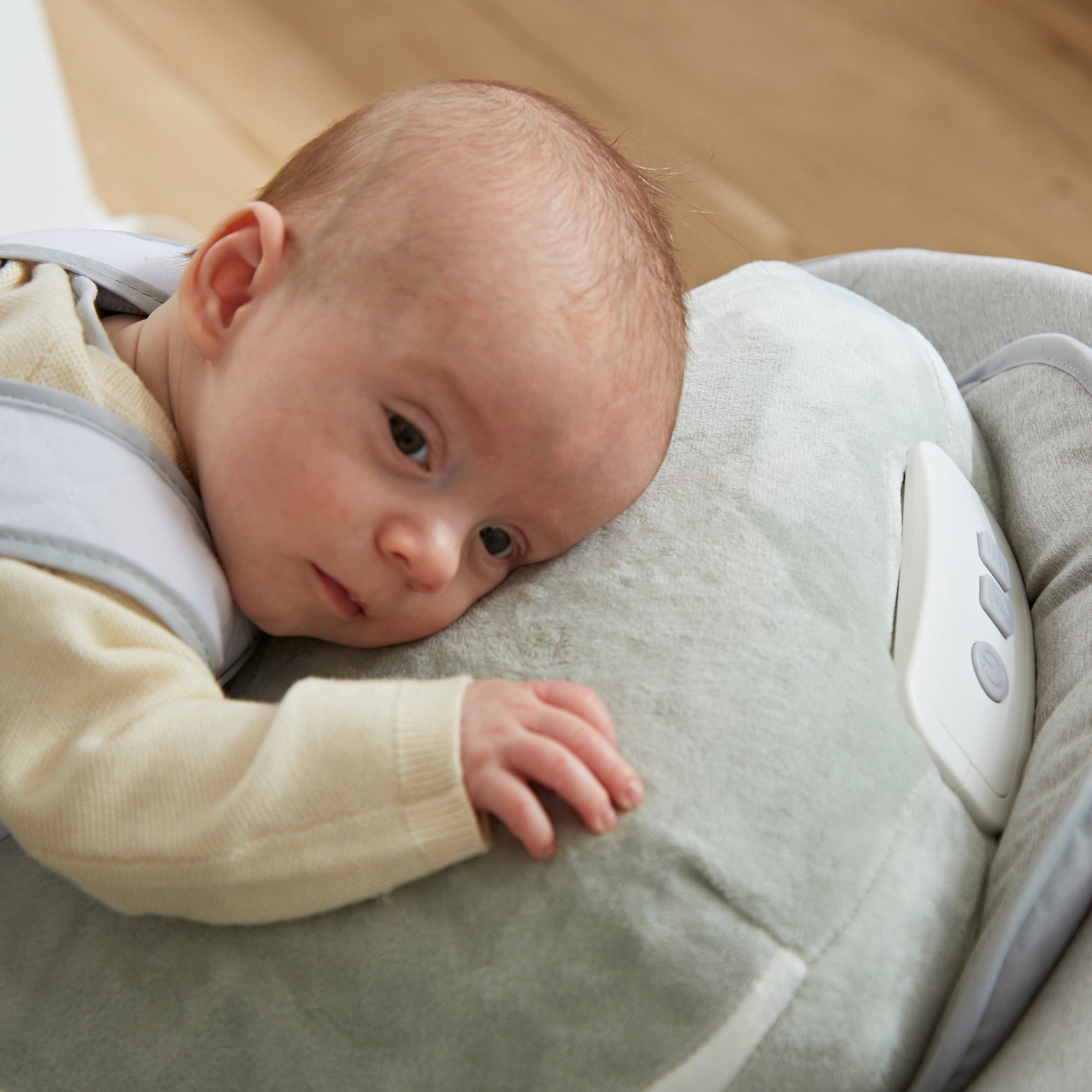We’ve all experienced those familiar stomach pangs of trapped wind and know it can be uncomfortable or sometimes, painful! It’s completely normal for babies to get trapped wind, although some experience it more frequently than others.
Here we’ll talk you through the most common causes and symptoms of trapped wind, what you can do to avoid it and ways you can help to ease it.
How do babies get trapped wind?
Both bottle and breastfed babies can get trapped wind, but in general, it’s thought that breastfed babies experience it less. This is thought to be because breastfed babies swallow less air when breastfeeding.
Gas is also produced naturally by our bodies as a by-product of food digestion. Some of us, babies included, produce more gas than others. When either of these things happens, we can experience the symptoms of trapped wind.
Symptoms of trapped wind
Bloating, stomach cramps, pains and burping or flatulence are common symptoms. If your baby has these, they may seem grizzly, cry or find it hard to settle. If your baby is posseting (bringing up a small amount of milk after feeds), is colicky or has reflux then burping your baby can help.
Tips to ease your baby’s trapped wind
Although it’s not completely avoidable, first let’s think about how to prevent your baby from getting trapped wind in the first place.
Preventative measures
- Try sitting your baby upright during breastfeeding or bottle feeds. This could prevent them from swallowing as much air.
- When bottle feeding, whether with formula or expressed breastmilk, you can try an anti-colic bottle. They’re specially designed to prevent a baby from taking in as much air when feeding. This can reduce trapped wind and burping. However, there isn’t any scientific evidence that these types of bottles work so it may not work for your baby.
- If your baby is bottle feeding, make sure that the hole in the teat is the right size. If it’s too big then milk can come out too quickly resulting in swallowing more air.
Burp during feeds
If your baby seems uncomfortable during a feed, pulls away or is crying out and wriggling then this is a good time to burp them. You can also do this if you switch breasts or break off during a bottle feed.
Finding what works for your baby to relieve trapped wind
There’s more than one way to burp a baby! Sometimes it takes a little experimentation to find out which way you both prefer.
Tip: Often, milk can come up with the air when you’re burping a baby. This is totally normal. Try putting a muslin cloth or bib over your clothes to avoid getting it on yourself.
There are three main positions for baby when burping
1. Over your shoulder
- Hold your baby so their body is facing yours with their chin resting on your shoulder
- Support baby's bottom with one hand
- Gently pat and rub your baby on the back with the other hand
2. Sitting on your lap
-
Sit your baby facing away from you on your lap
- Use one arm to support your baby's body, with the palm of your hand on their chest as your fingers support the chin and jaw. Keep fingers away from the throat area
- Leaning your baby forwards slightly, gently patting or rubbing their back with your other hand.
3. Face down across your lap
-
Sit down somewhere comfortable and supportive. Lie your baby face down on your legs so they're lying across your knees at a right angle to your body.
- Support your baby's chin and jaw with one hand, keeping her head held slightly higher than her body
- Run or pat your baby's back gently with your free hand #
Hands-free assistance
It’s not always possible to hold and burp our baby’s 24/7, so if your baby suffers particularly with wind or colicky symptoms, it can be difficult to settle them. But, this can mean you never have your hands free. Not ideal if your a busy parent!
The babocush is designed to help ease symptoms of trapped wind and colic. By positioning your baby comfortably and securely on the babocush instead of laying them onto their back after feeding and burping, you can help to soothe and settle your baby. Find out more about the benefits of the babocush, including colic and reflux relief as well as easing trapped wind.
Encourage your baby to relax
If your baby is agitated, try to relax your baby by singing or talking. If you’re standing up, gently bouncing up and down at the knees can also help your baby to release wind.
Night time burping
If your baby often falls asleep after feeding but wakes up with trapped wind later, try sitting them up for a little while when they fall asleep. This will encourage the release of trapped air or gas before it travels further down the digestive system. Patting their back gently at the same time will also help.

We hope these simple but effective tips help to ease your baby’s trapped wind. Remember, trapped wind should generally be no cause for concern, but if you’re worried about excessive or constant trapped wind, consult your GP or paediatrician.


